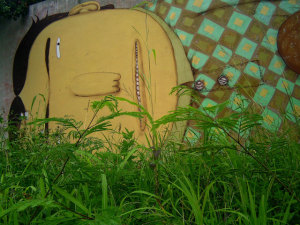Global warming has become one of greatest concerns of our time and Cubans also suffer from its consequences. The official media inform about the retreat of glaciers and the Arctic ice, which has been melting at a speed much faster than expected, leading to natural disasters in different parts of the world.

However, the measures so far taken by the Cuban government to preserve urban green spaces are hardly noticeable. According to the information communicated by the official press, only tourist areas have been included in the recovery plan, as shown for example in a report published by the newspaper Granma on July 22, 2012, where experts from the Institute for Research in Agroforestry discuss a tree replanting methodology plan, which, however, covers only national heritage sites (Plaza de Armas square, Colon Cemetery, Plaza de la Revolucion square and some other areas in the Old Havana).
A telling example of this is that Cubans frequently complained about the weather this winter. Exclamations such as “How can it be so hot in winter? What will the weather be like in summer?” were often heard. The reason is, in the last forty years, the average annual temperature in Cuba has increased by approximately 0.6 %. Moreover, summers tend to be longer these days. Also, extreme droughts affect the island frequently.
As time passes by, the climate of the country is becoming warmer and warmer and bragging about planting tree nurseries with thousands of seedlings (to be later replanted elsewhere) is just not enough. New, appropriate tree species need to be planted all over the city instead of stumps of diseased plants and trees which large roots that have destroyed the few pavements that there are left in the capital. According to the official figures in the press there are currently over ten thousand trees in the capital of Havana which should be cut down. By planting new trees, the urban environment would become less aggressive and the suffocating heat would decrease.
Needless to say, proper implementation of the plan is vital. Never again should the scenario of the summer of 2011 repeat, when a group of workers planted poinciana seedlings in several areas of the Diez de Octubre municipality under the midday sun. One of those areas was San Francisco street in Lawton. As can be assumed, these clumsy reforestation efforts were fruitless. The seedlings failed to root properly and died.

Leave a comment